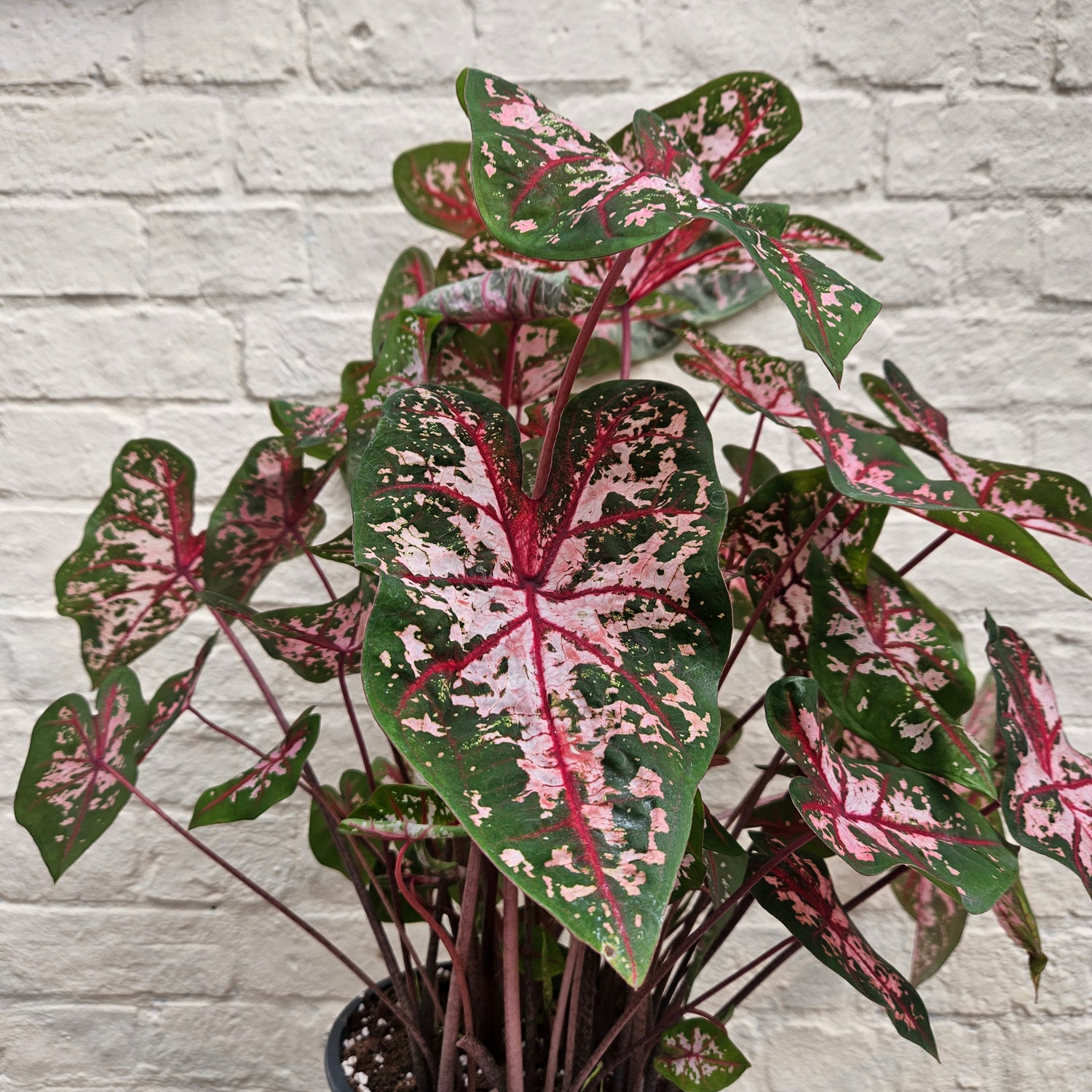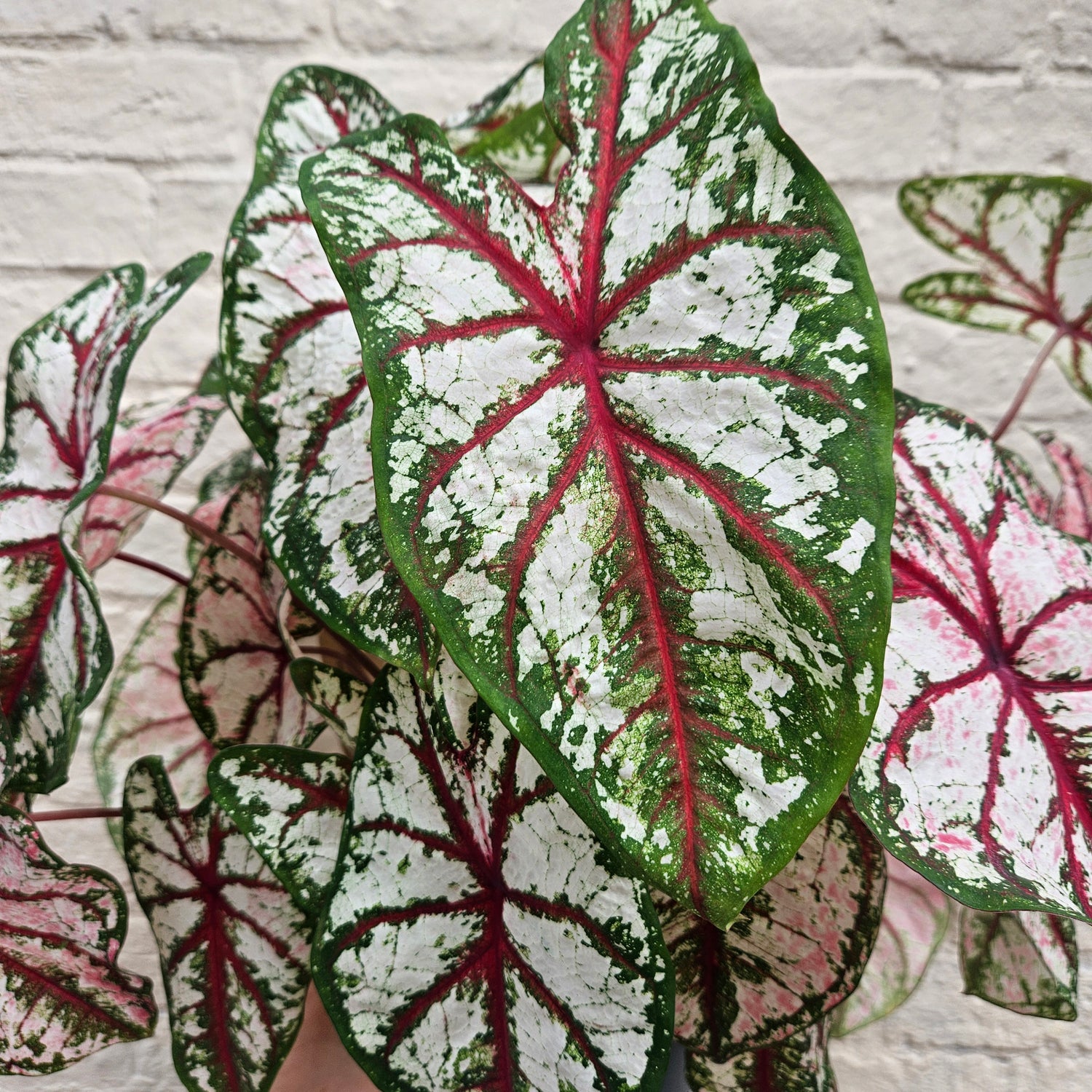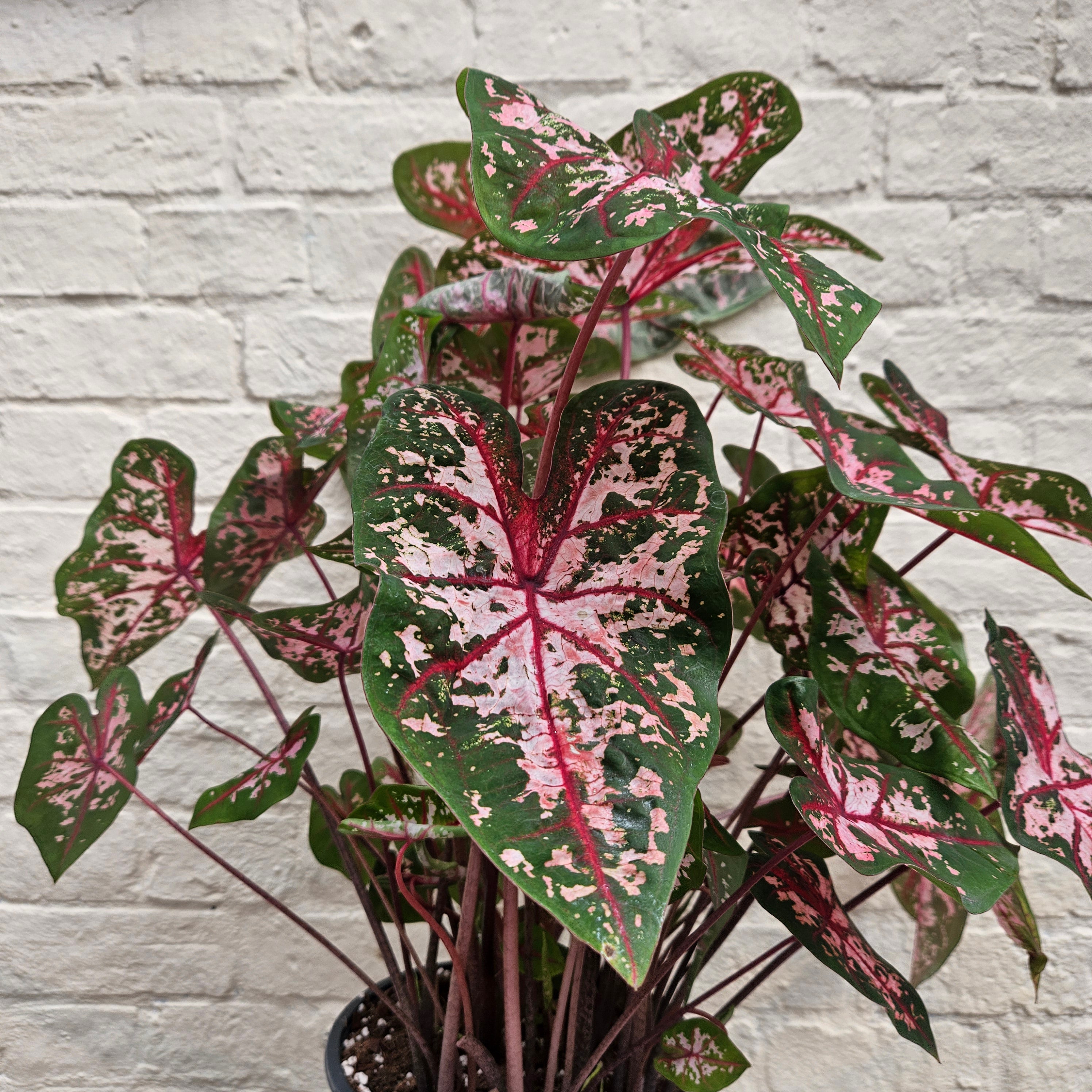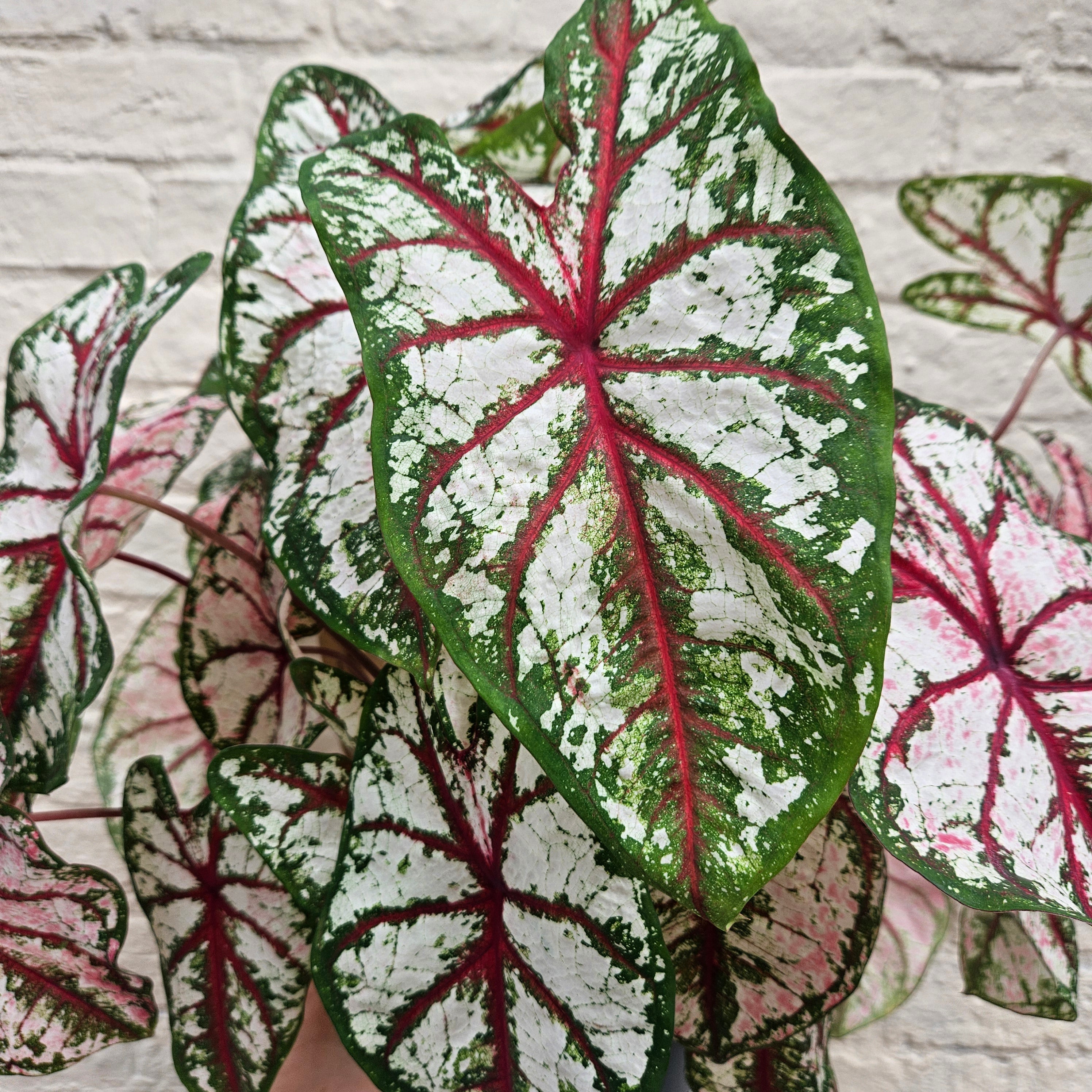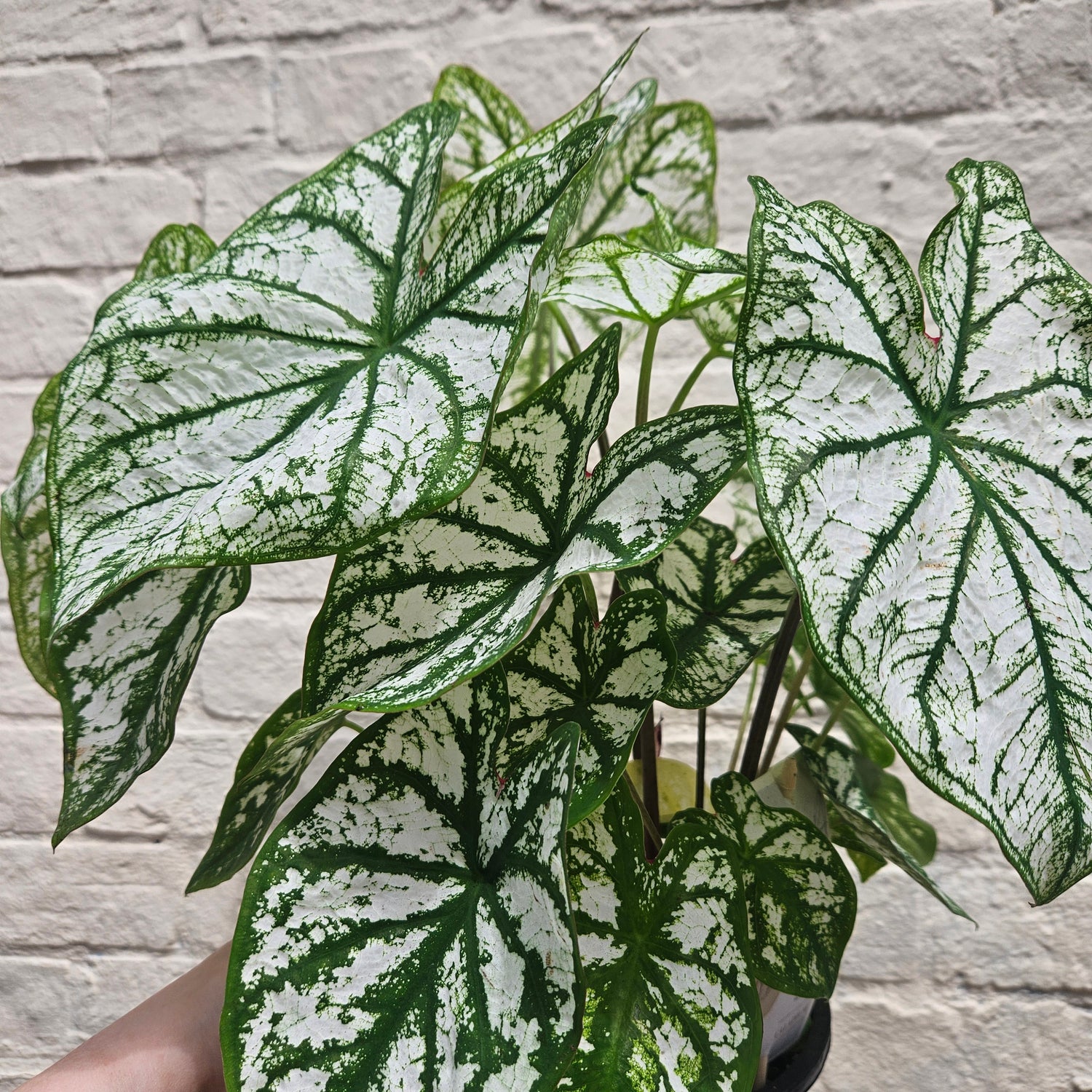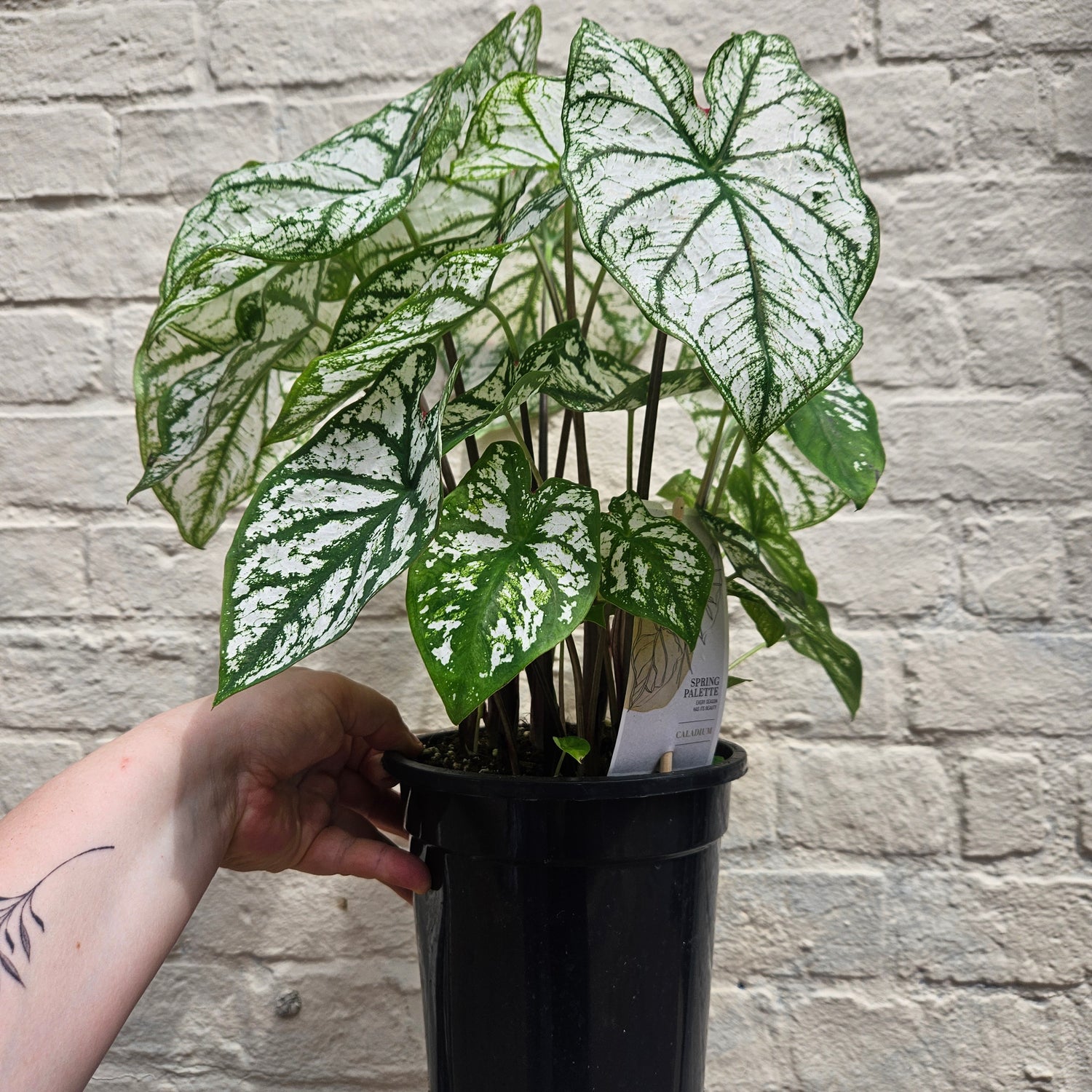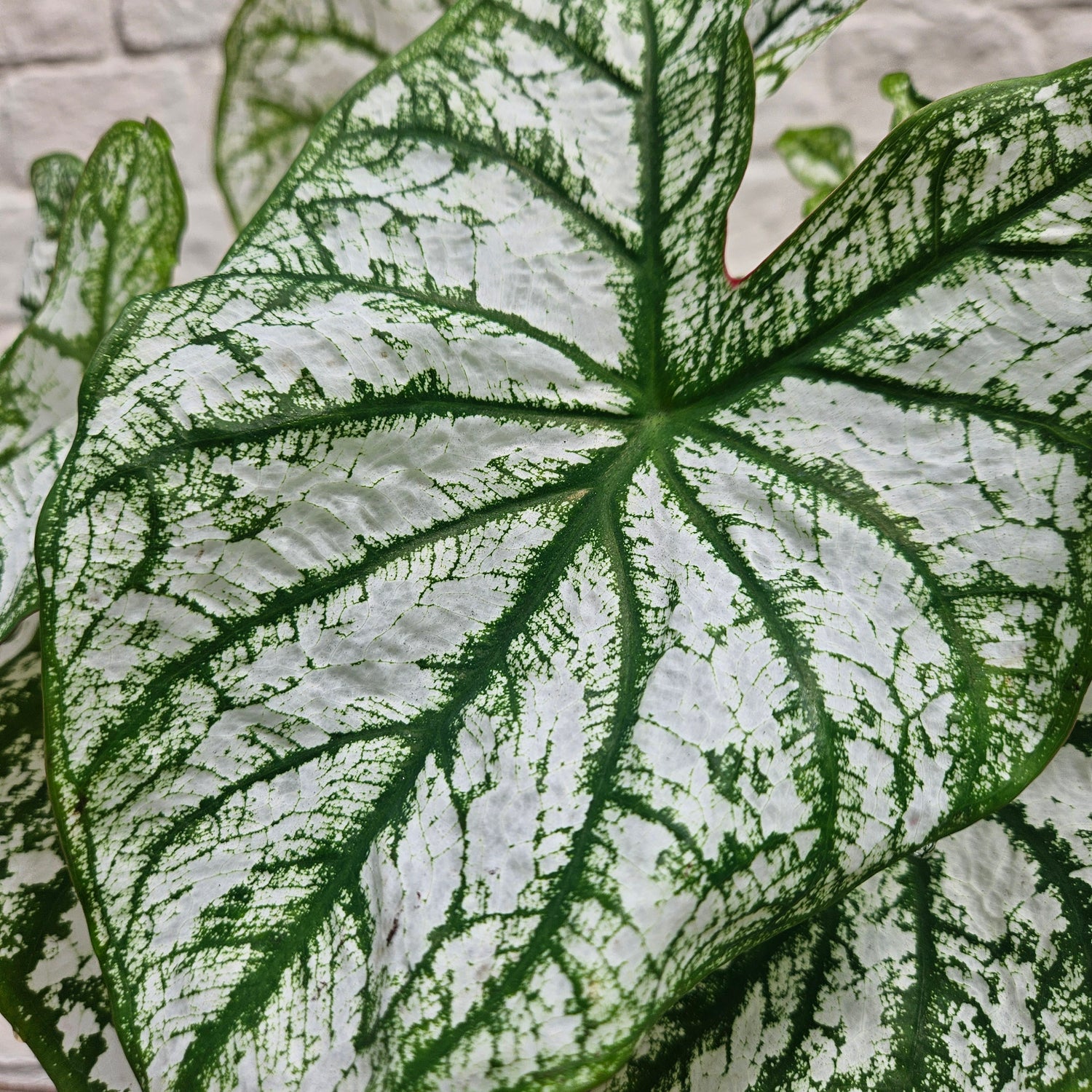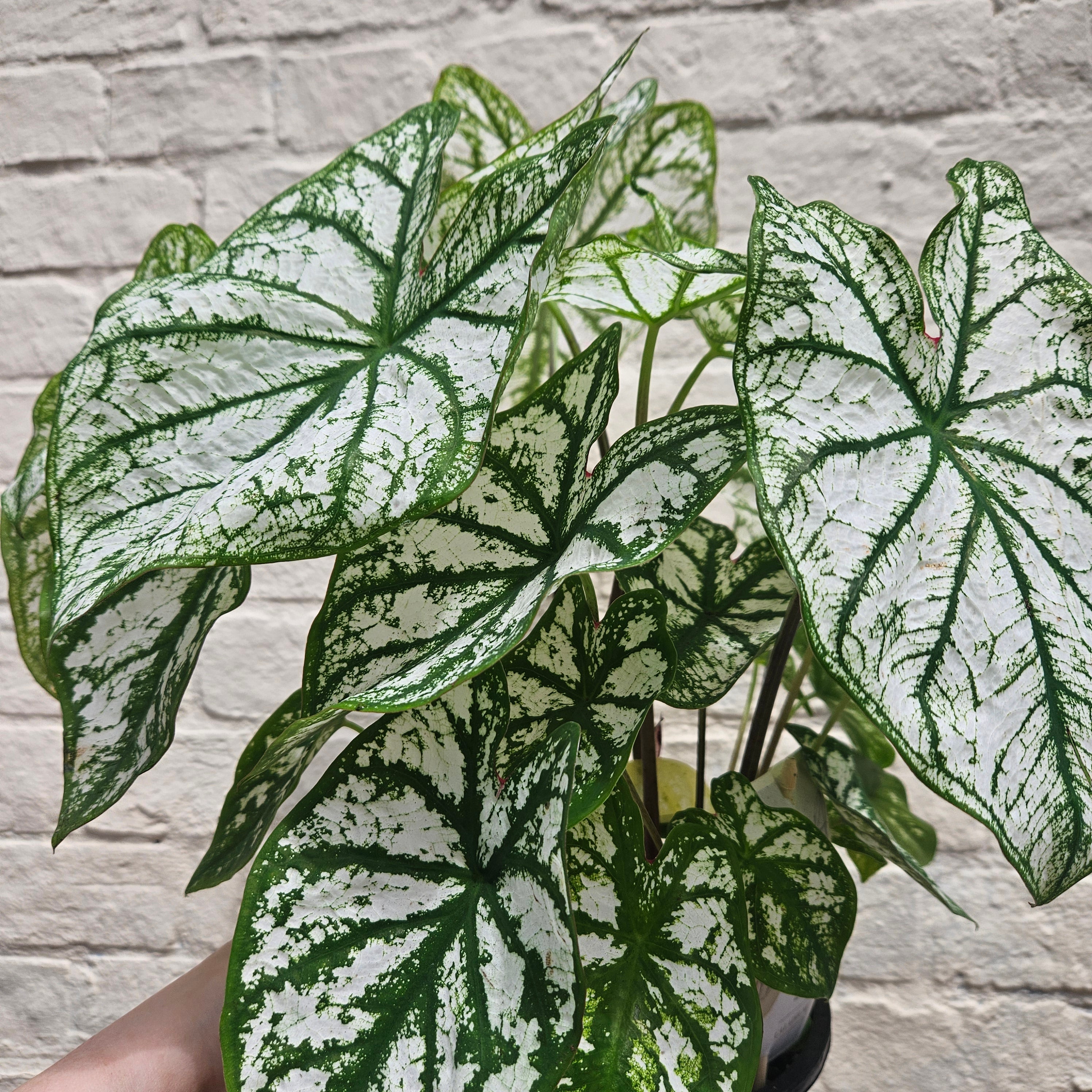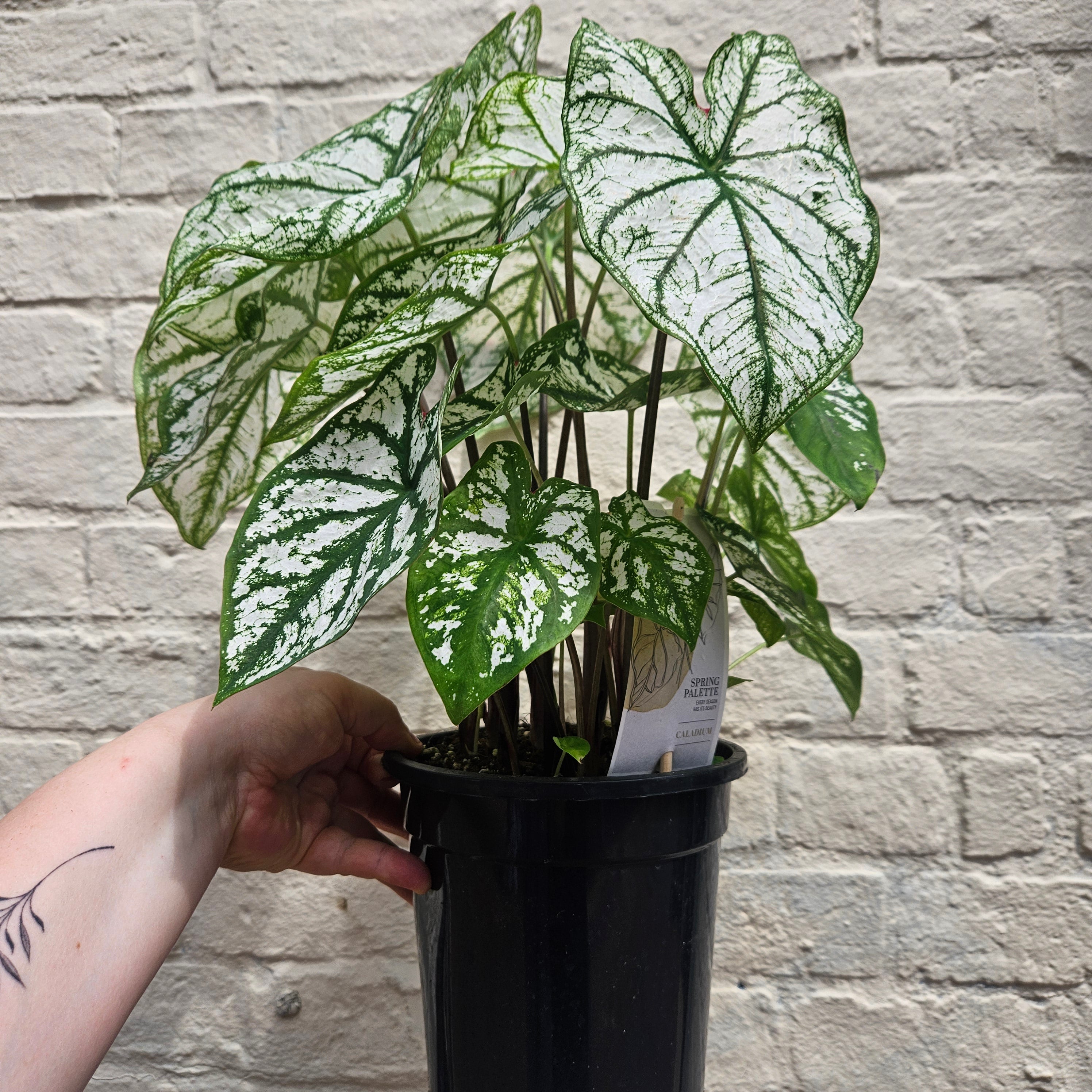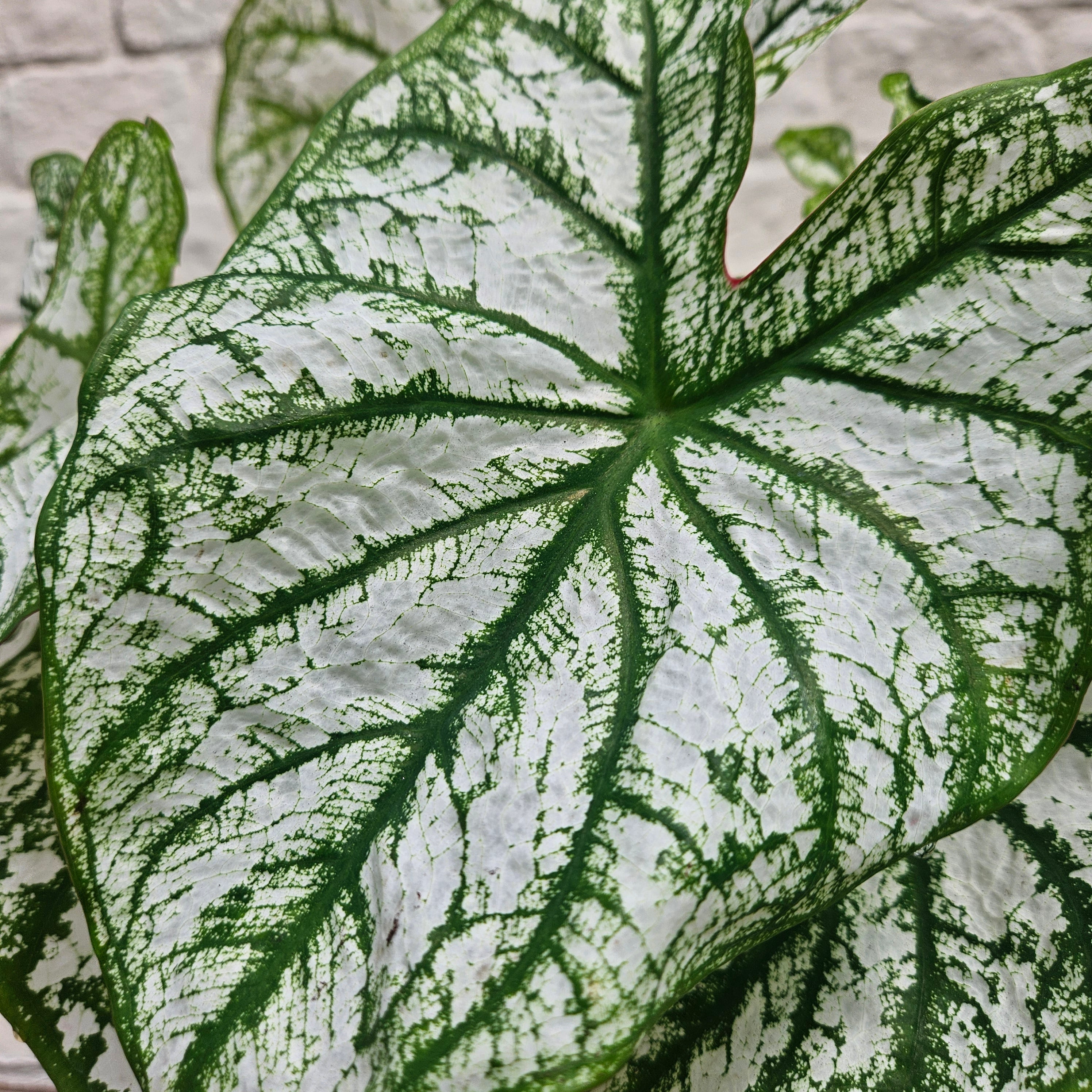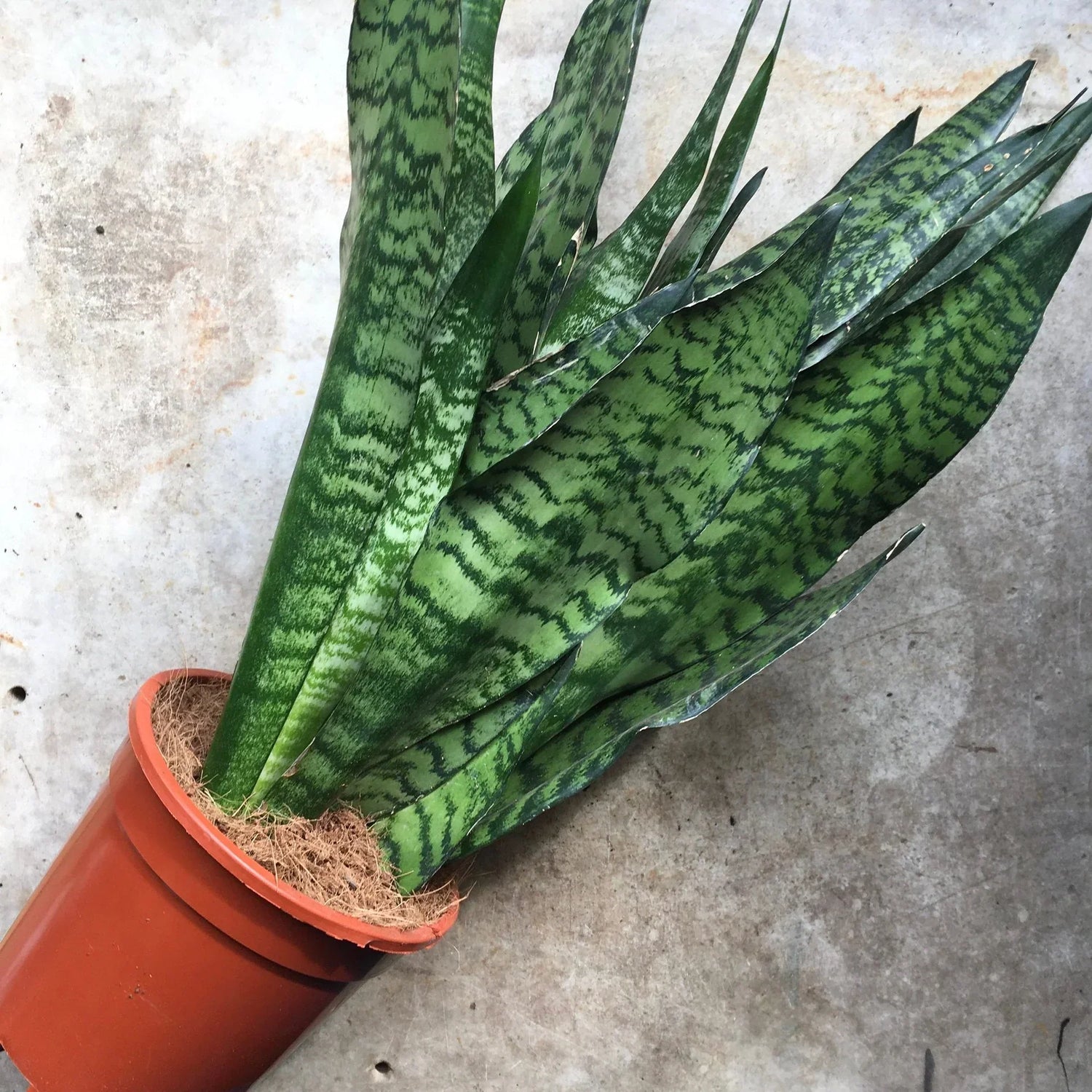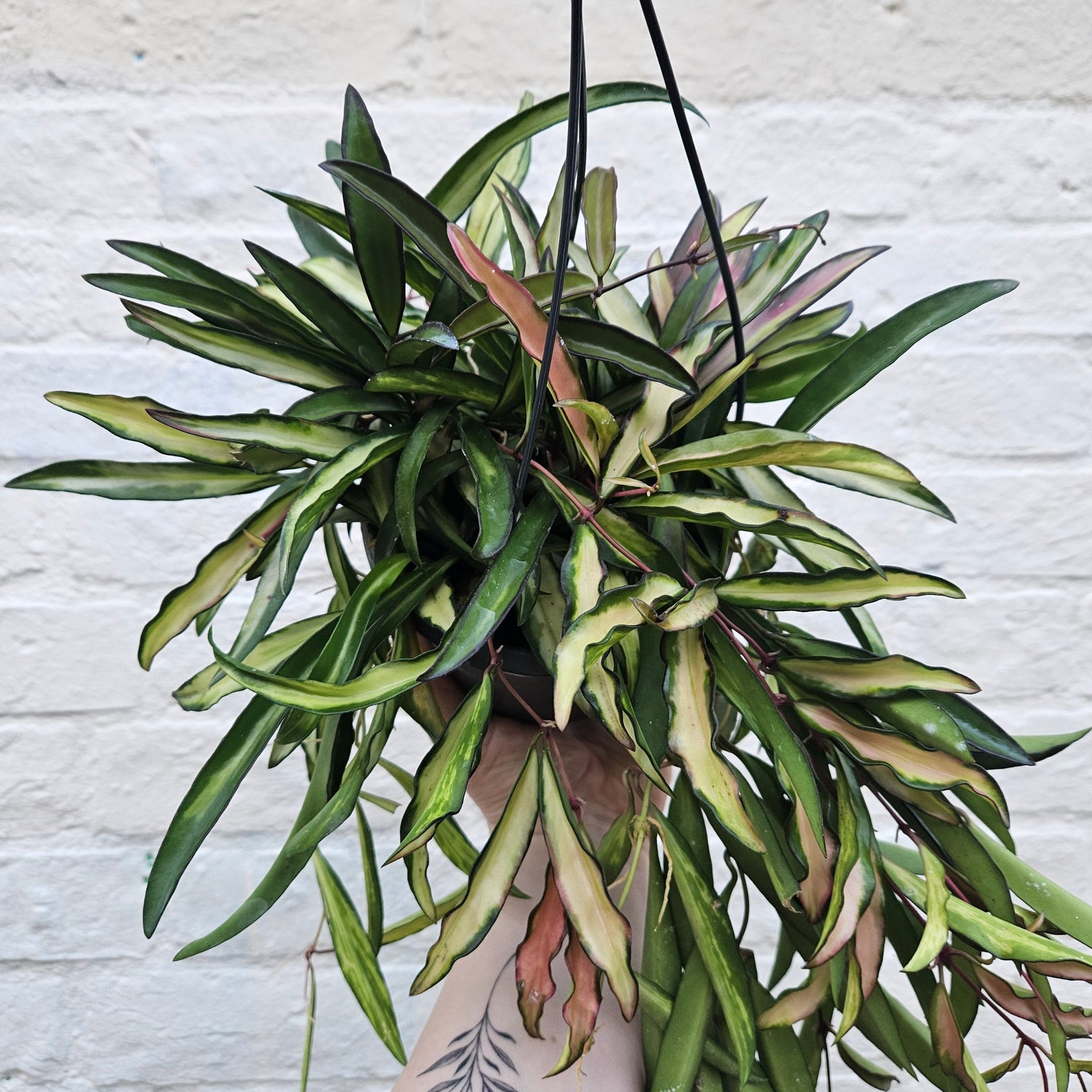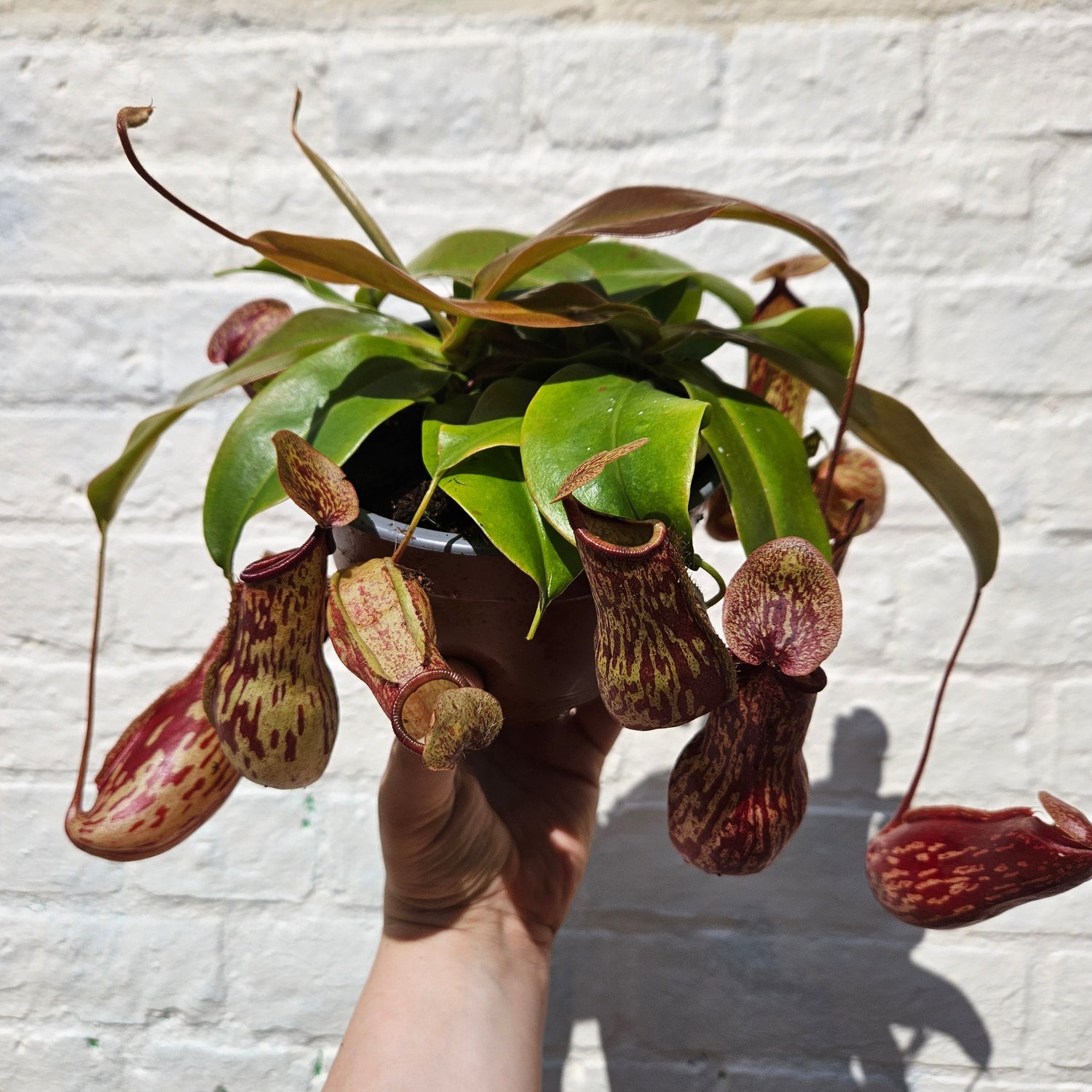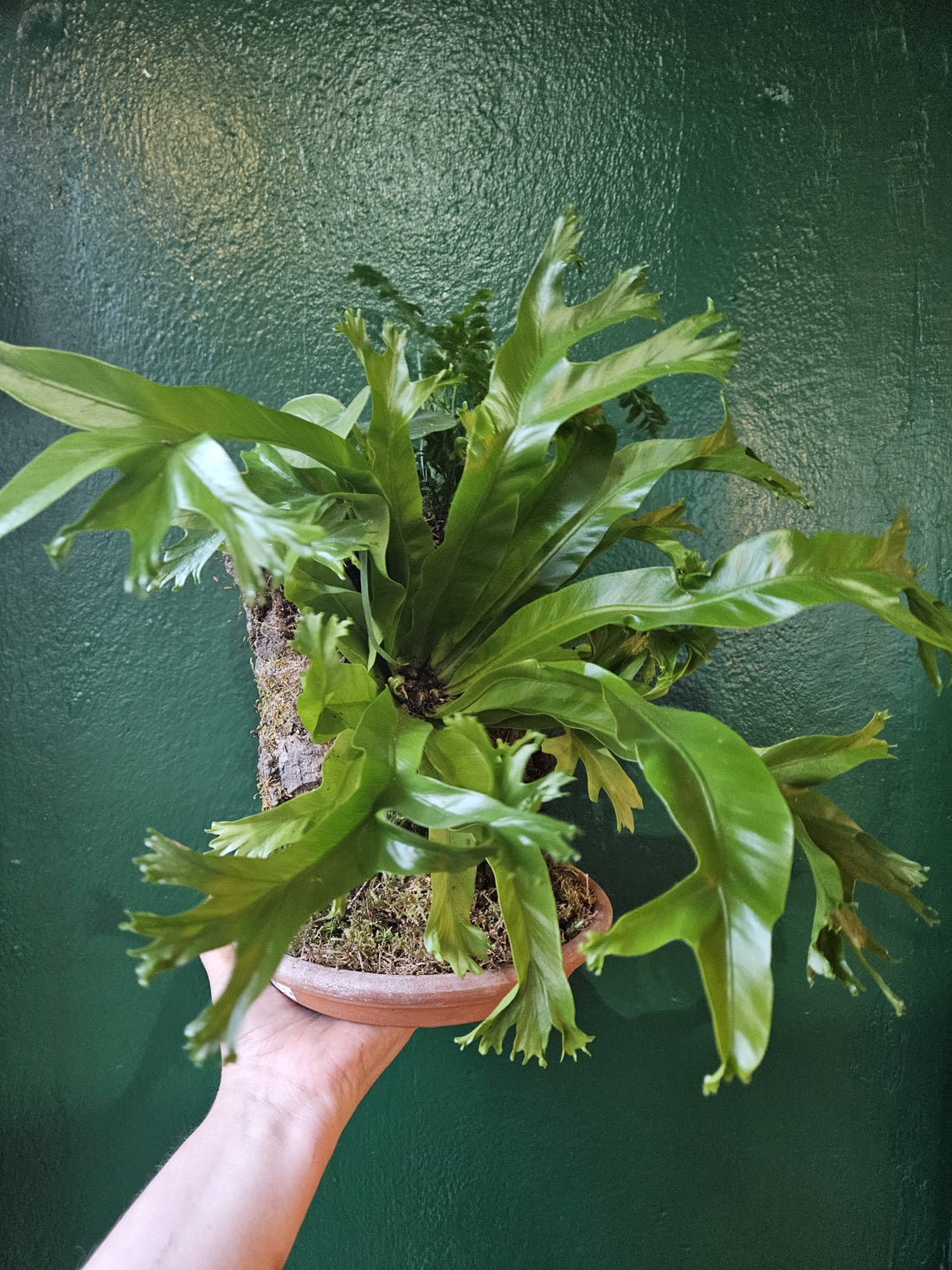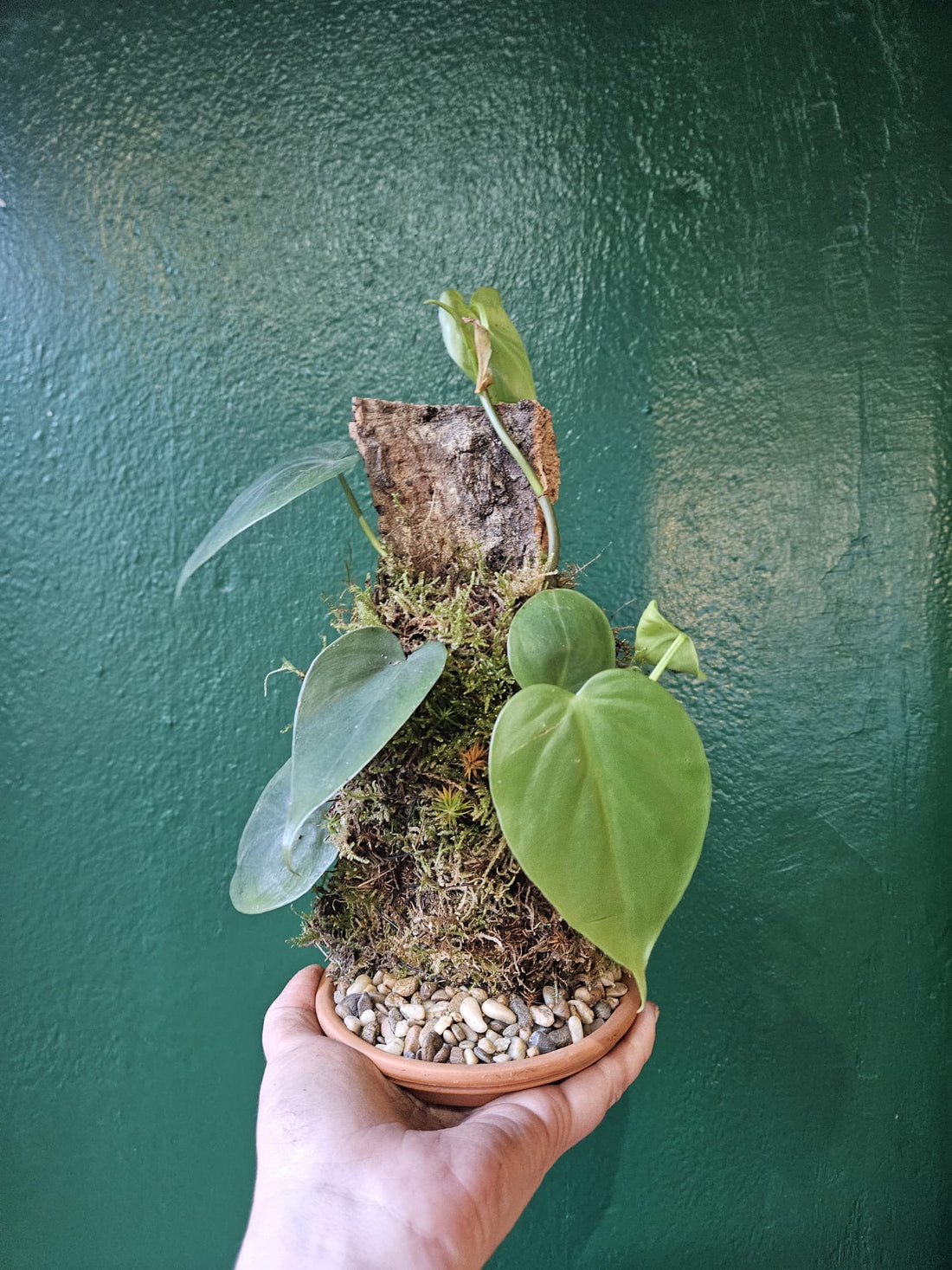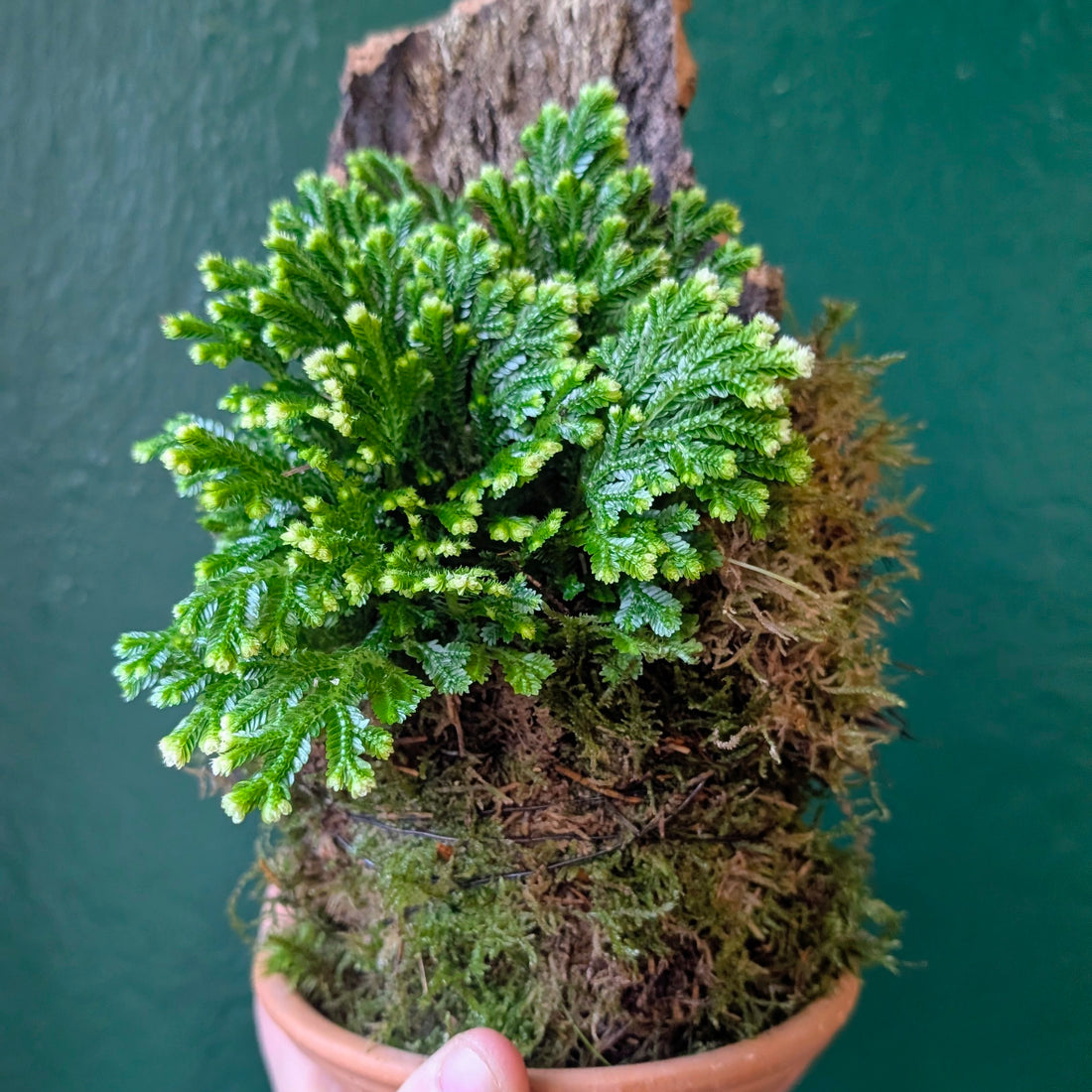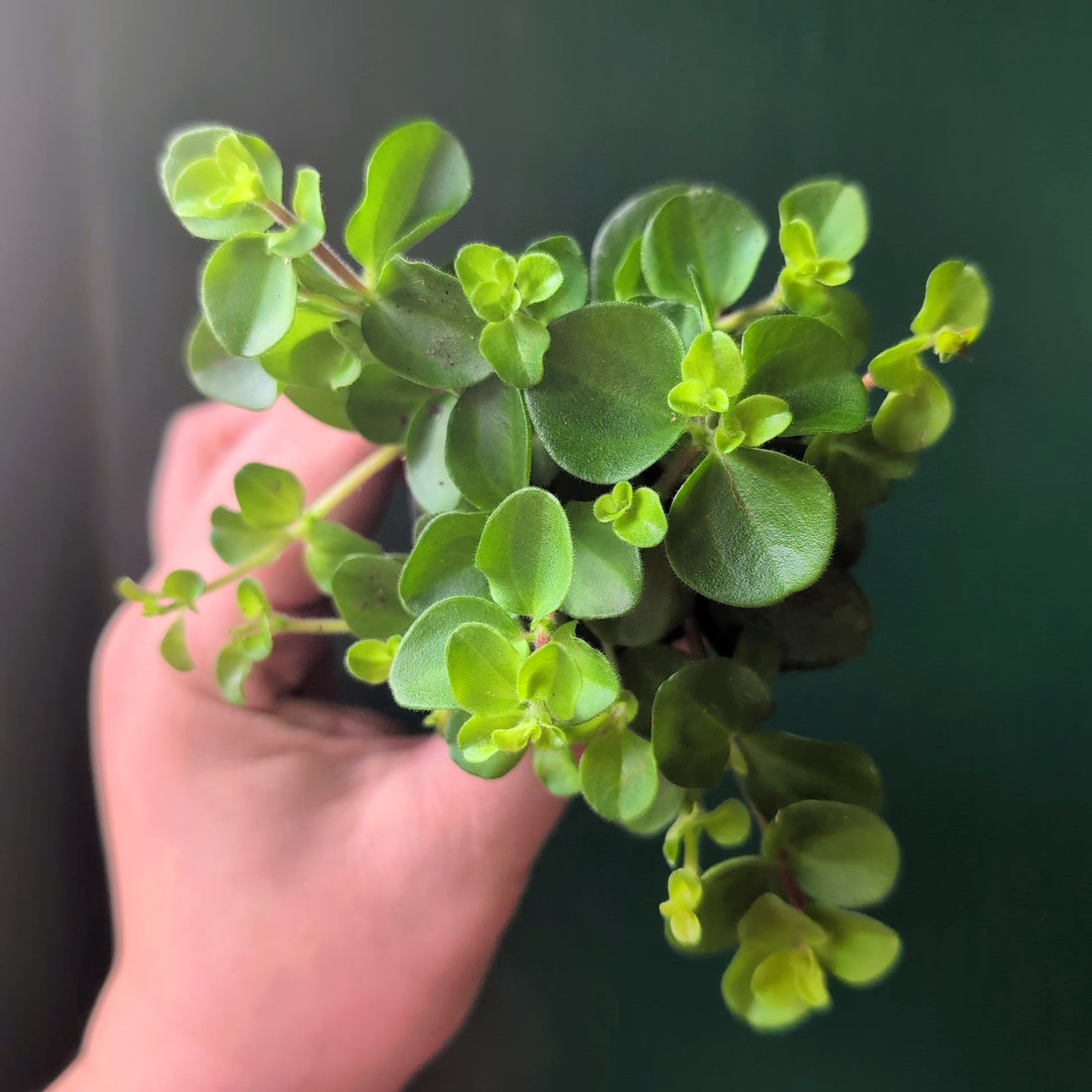Caladiums are true stunners in the houseplant world, celebrated for their vibrant colours and striking patterns. With delicate, paper-thin leaves shaped like hearts or arrows, these tropical beauties add an instant pop of drama and elegance to any space. Their foliage comes in a dazzling array of pinks, whites, reds, and greens, often with intricate mottling or bold veining that makes each leaf a work of art.
In this comprehensive guide, we'll walk you through everything you need to know to keep your Caladium happy, healthy, and thriving—from light and watering needs to seasonal care and common issues. Whether you're a beginner or a seasoned plant lover, your Caladium is about to become the star of your indoor jungle.
Caladium Overview
Caladiums, also known as Elephant Ears, are native to the lush tropical rainforests of Central and South America. These perennial bulb plants are not only showstoppers but also quite fascinating—they require a period of winter dormancy. During the dry season in Central and South America which is around March to October caladiums will go dormant, losing most of their leaves. This is in order to protect themselves from dehydration, which we’ll cover in detail later in this article.
With so many stunning varieties to choose from, Caladiums make excellent and versatile indoor houseplants. Their leaves vary dramatically in colour and veining, often looking as though they've been hand-painted—no two plants are ever exactly alike! Many varieties grow in a bushy, full form, with leaves that can easily span larger than the palm of your hand.
Each variety comes with its own unique charm and nickname—like White Christmas, Tapestry, or Miss Muffet—each flaunting distinct patterns, colours, and personalities. Whether you’re after something bold and vibrant or soft and elegant, there’s a Caladium for every style.
How to Look After a Caladium (Elephant Ear) Indoors
Light requirements:
For your Caladium to truly thrive, it needs medium to bright indirect light. A spot a few feet away from an east- or west-facing window is ideal. These plants love light—but not too much of it. Direct sunlight can scorch their delicate, paper-thin leaves, causing them to fade or burn. If you notice browning or crispy edges, it’s likely getting too much sun. Simply move your Caladium to a slightly shadier spot, or use a sheer curtain to diffuse harsh light.If your plant isn’t getting enough light, the vibrant colours may fade, and growth can slow down. So aim for that sweet spot—bright, filtered light for the boldest foliage and healthiest growth.
Watering:
Caladiums have specific watering needs that are key to keeping them healthy. Their soil should be kept consistently moist but never waterlogged—excess moisture can quickly lead to root rot, especially with their delicate tuber system. A good rule of thumb is to water when the top inch of soil feels dry. Always allow the pot to drain thoroughly and avoid letting the plant sit in standing water. Caladiums can be sensitive to chemicals commonly found in tap water, which may cause browning edges on their leaves. Rainwater is ideal, but if that’s not readily available, simply leave tap water to stand for 24 hours before using it. This allows chlorine and other chemicals to dissipate.
Once your Caladium enters its dormant period (typically in autumn), stop watering completely until signs of new growth reappear in spring. At that point, resume watering gradually to avoid overwhelming the newly forming roots.
Temperature and Humidity:
Caladiums thrive in warm, humid environments, much like their native tropical jungles. When humidity is too low, their delicate leaves can suffer, often developing crispy edges. Dry indoor air—especially from central heating—can cause problems, as can exposure to cold drafts or sudden temperature drops.
To keep your Caladium happy, maintain a consistent temperature between 15°C and 24°C. Avoid placing your plant near radiators, open windows in winter, or air conditioning vents. Humidity should ideally stay between 50% and 70%. If your space is dry, you can increase humidity by grouping plants together to create a more humid microclimate, using a room humidifier, or placing your Caladium in naturally more humid areas like the bathroom or kitchen. With the right balance of warmth and humidity, your Caladium will reward you with lush, vibrant foliage all season long.
Toxicity:
Caladiums are toxic to both humans and pets if ingested. They contain insoluble calcium oxalate crystals, which can cause irritation and swelling in the mouth and throat, leading to pain, drooling, difficulty swallowing, or even breathing issues. If you have curious pets or young children, it’s best to keep Caladiums well out of reach or consider a pet-safe alternative. Ingestion can also lead to nausea or vomiting. If any of these symptoms appear—especially in pets—seek veterinary attention immediately. While Caladiums are beautiful, safety should always come first when choosing plants for your home
Feeding:
To support healthy foliage and vibrant colour, Caladiums benefit from regular feeding during their active growing season—typically spring and summer. Apply a balanced liquid fertiliser every 2 to 4 weeks, following the instructions on the packaging for the correct dilution. Avoid over-fertilising, as this can lead to salt build-up and leaf damage. Once the plant enters its dormant phase in autumn and winter, stop feeding entirely until new growth returns in spring.
Repotting:
Caladiums don’t need frequent repotting, but it’s a good idea to repot every three years or whenever the plant has clearly outgrown its current container. The best time to do this is in spring, just as the plant is coming out of dormancy. When repotting, choose a new pot that is one to two inches larger in diameter than the current one. It’s important that the container has good drainage holes to prevent water from sitting around the roots, which can lead to rot. When placing the tubers in the new soil, avoid planting them too deeply. For best results, set the tubers just below the soil surface, with any visible growth points facing upward. This helps encourage healthy, upward growth as the season begins. Repotting not only gives your Caladium more space but also refreshes the soil, providing nutrients to support strong growth.
How to Re-pot a Caladium
When to re-pot:
Caladiums generally need repotting every 3 years, or when their roots become crowded and start circling the base of the pot, or growing out of the drainage holes. Spring is the best time to repot, as the plant is actively growing, try to avoid repotting plants in winter.
Selecting the Right Pot:
Choose a pot that is one or two sizes larger (this refers to the diameter of the plant pot, normally measured in centimetres, the pot size would therefore be around 1-2 cm wider) than the current one, ensuring it has drainage holes at the bottom. This allows excess water to escape, preventing waterlogged soil. You can always place your nursery pot in a decorative pot if you want to retain drainage but hide the plastic.
Repotting Process:
Carefully remove the plant from its current pot, gently loosening the root ball. Place it in the new pot and add fresh, well-draining potting mix around the roots. Gently press the soil to ensure the roots are bedded in. Avoid pressing too hard on the soil as this can cause it to compact. The tubers should not be placed to deep, plant them just below the soil surface for best results. Water the plant thoroughly after repotting.
How to Propagate a Caladium
Propagating a Caladium is an exciting and simple way to grow new plants. The best method is tuber division, especially if your plant has multiple stems or visible “babies.” Here's how to do it:
-
Water the plant the day before propagation to reduce stress and make handling easier.
-
Gently remove the plant from its pot and loosen or rinse off the soil to expose the tubers.
-
Carefully separate the tubers, ensuring each one has at least one growth point (bud) and some roots.
-
Replant each tuber in a pot with well-draining soil, positioning it just below the soil surface.
-
Water the soil lightly after planting to help settle it around the tuber.
-
Place the new pots in a warm, bright location, out of direct sunlight.
-
Be patient—new growth may take a few weeks to a few months to appear.
Continue caring for the new plants as you would a mature Caladium, and soon you’ll have even more stunning foliage to enjoy.
Winter dormancy care for Caladiums
During the winter months, Caladiums naturally go dormant—much like they would in their tropical rainforest habitat. While it is technically possible to keep them going with a specialised setup (like grow lights and controlled humidity), it’s usually best to let them rest.
By late September, begin reducing watering and stop fertilising altogether. As dormancy sets in, the leaves will start to yellow and die back. Don’t panic—this is completely normal! Once the foliage has fully died off, stop watering entirely.
Store the plant in a warm, semi-shaded spot where temperatures stay above 15°C (59°F). Avoid cold drafts or damp conditions, which can cause the tubers to rot.
Come March, your Caladium should begin to wake up. If needed, repot with fresh soil, but hold off on heavy watering. Wait until you see signs of new growth, then gradually resume your regular care routine. Remember—less is more at this stage. A gentle reintroduction to watering helps prevent rot and encourages healthy shoots.
How to Prune a Caladium
Pruning your Caladium helps maintain its shape and encourages healthy, vibrant growth. It’s perfectly normal for older leaves to turn yellow or brown over time—these should be trimmed away to keep your plant tidy and healthy.
Additionally, removing any flowers that appear is beneficial. By trimming off the blooms, the plant can focus its energy on producing lush, colourful leaves—the real stars of the show.
How Often Should I Water a Caladium
How often you water your Caladium depends on several factors, including humidity, temperature, where the plant is located, and the size of its pot. As a general guideline, check the top inch or so of soil—when it feels dry, it’s time to water. Adjust watering based on the season and conditions, ensuring the soil stays moist but never soggy.
Why Are My Caladium Leaves Going Yellow/Brown/Curling?
Yellow Leaves: Yellowing leaves can be caused by overwatering, poor drainage, or insufficient light. If you notice wilting alongside yellowing, overwatering is likely the culprit. Check the roots for rot and consider repotting if necessary. Adjust your watering routine and ensure the plant is in a spot with medium to bright indirect light.
Brown Leaves: Brown spots often mean your Caladium is getting too much direct sunlight. Move it to a location with bright, indirect light. Excessive warmth—like being too close to a radiator—can also cause brown, dry leaves that eventually fall off. Try relocating your plant to a cooler spot with stable temperatures.
Wilting Leaves: Wilting can indicate inconsistent watering—either too much or too little. Keep the soil moist but not soggy by watering only when the top two inches of soil feel dry. Regular watering helps maintain healthy, firm leaves.
Loss of Variegation: If your Caladium’s vibrant patterns start to fade, it’s often due to insufficient light. Move your plant to a brighter spot with indirect sunlight to help restore its beautiful colours.
With these expert tips, you're well-equipped to care for your Caladium and enjoy its lush, tropical beauty in your home. Happy Caladium growing!
